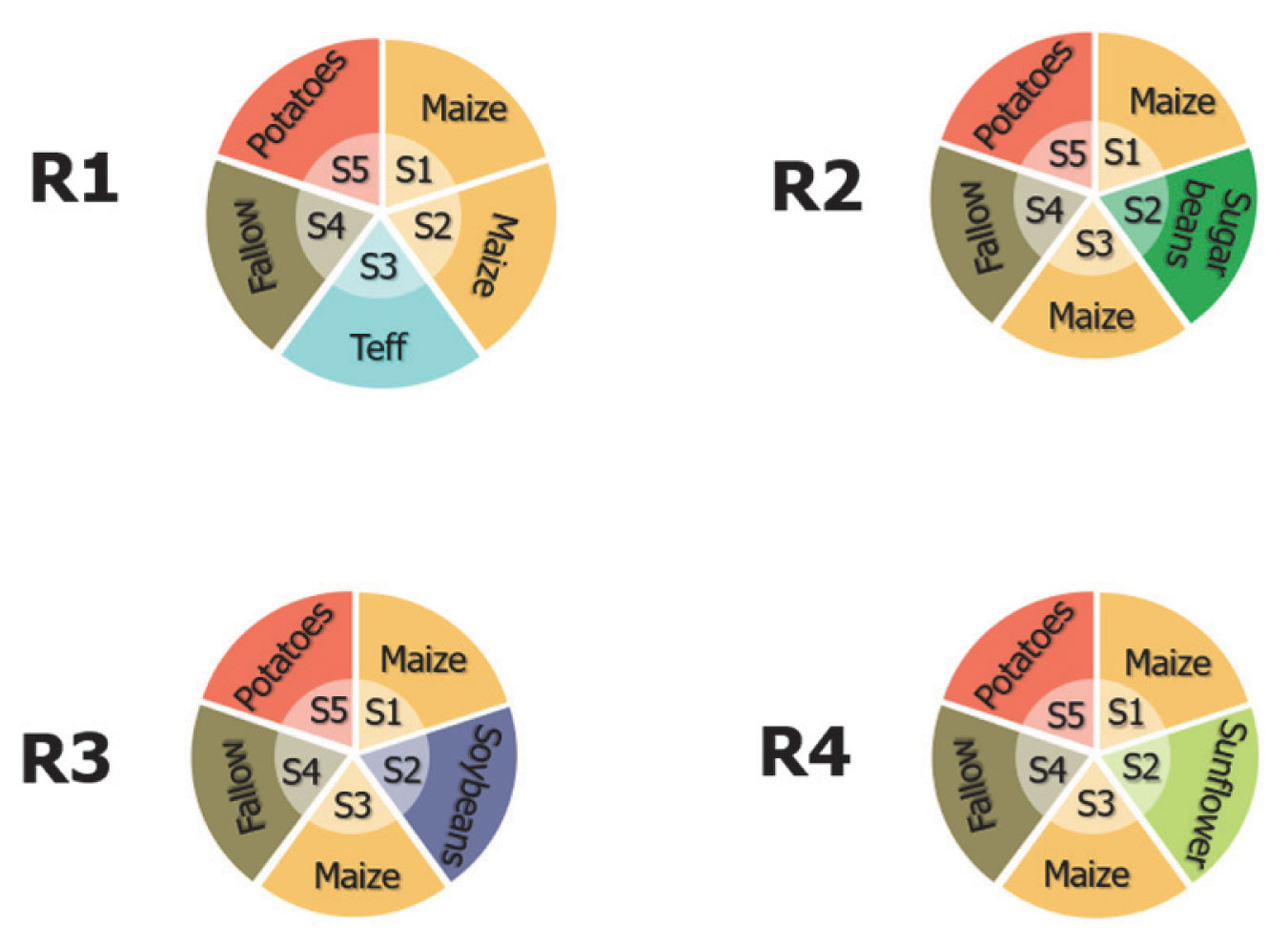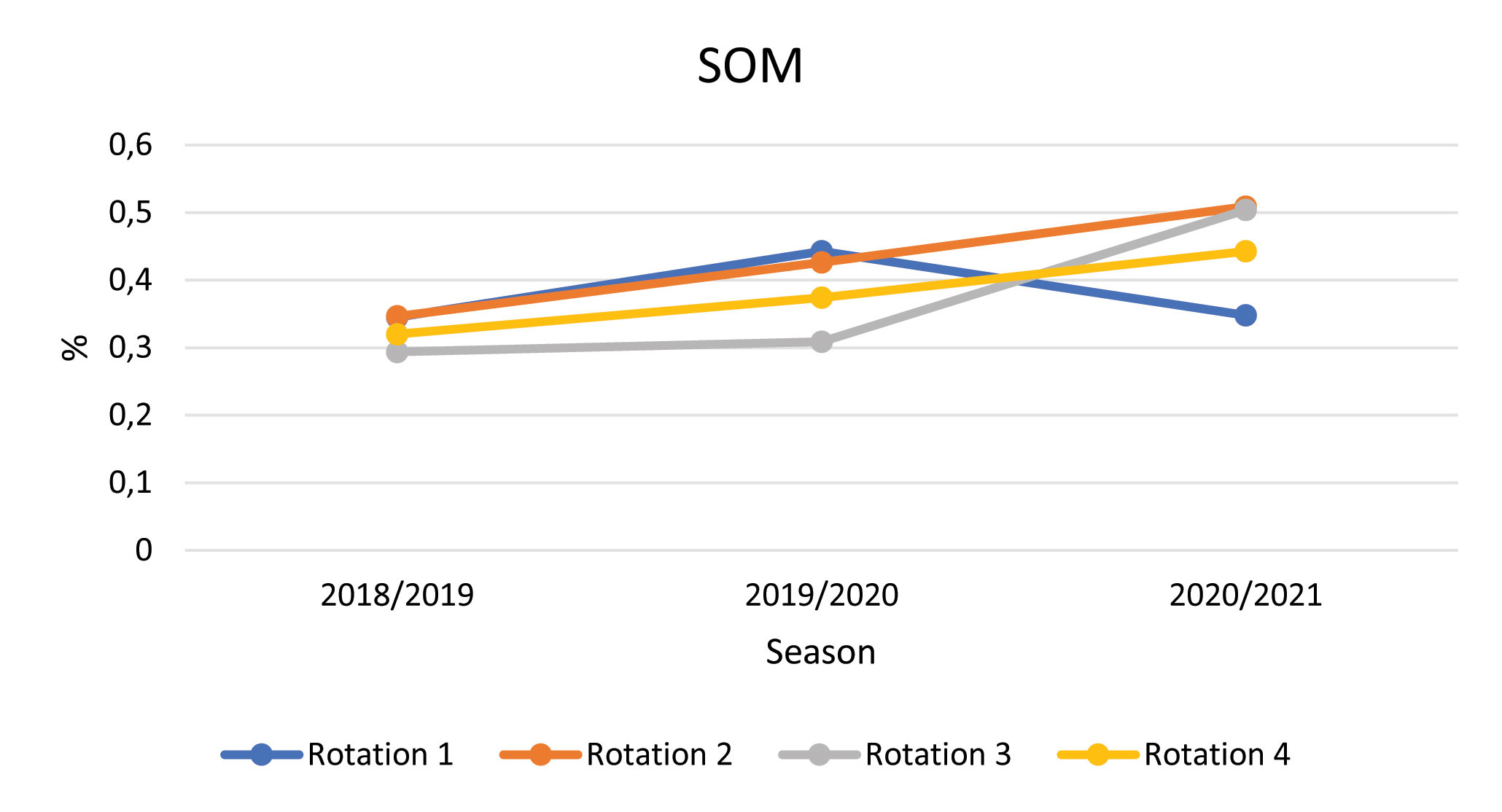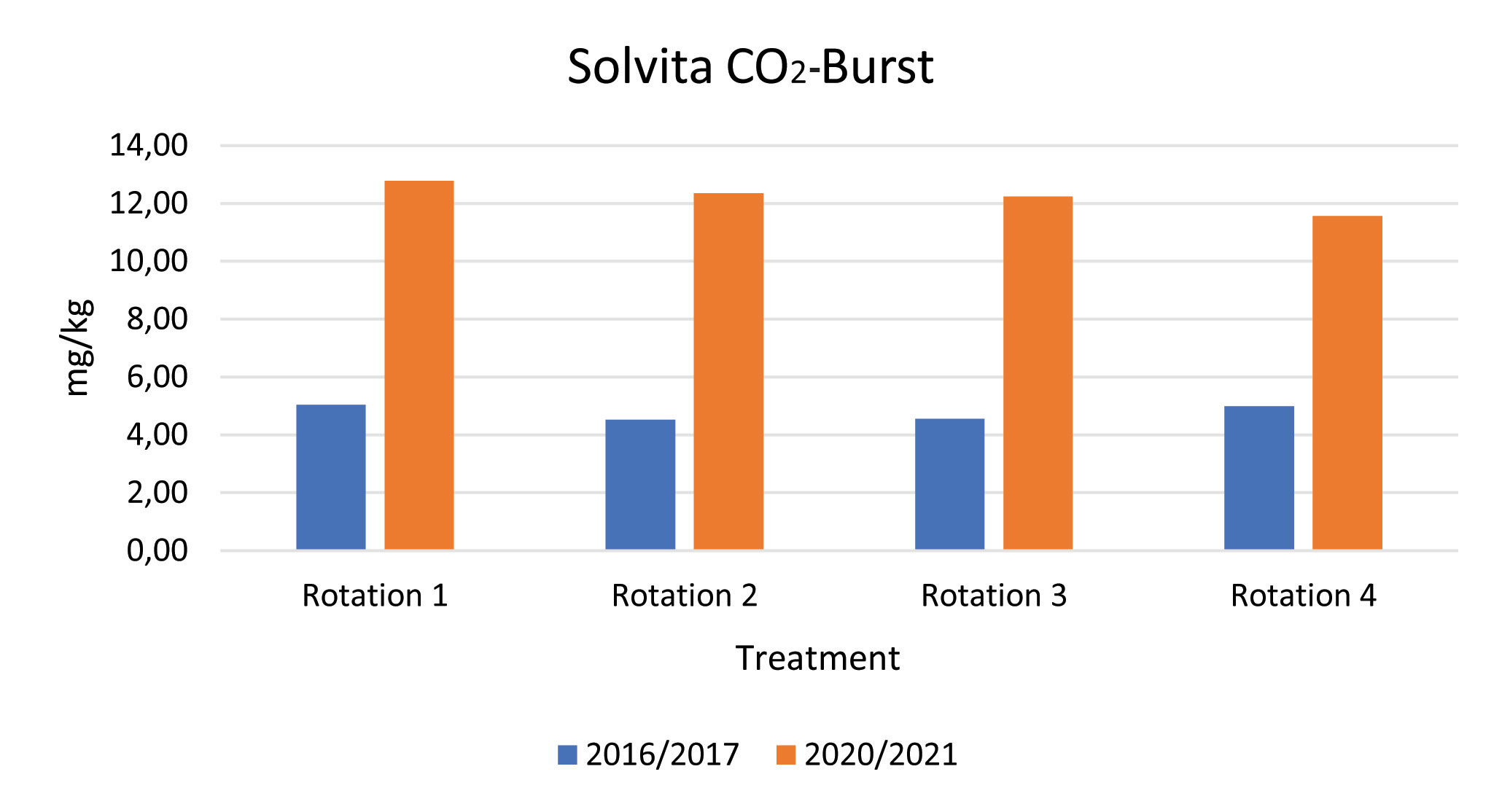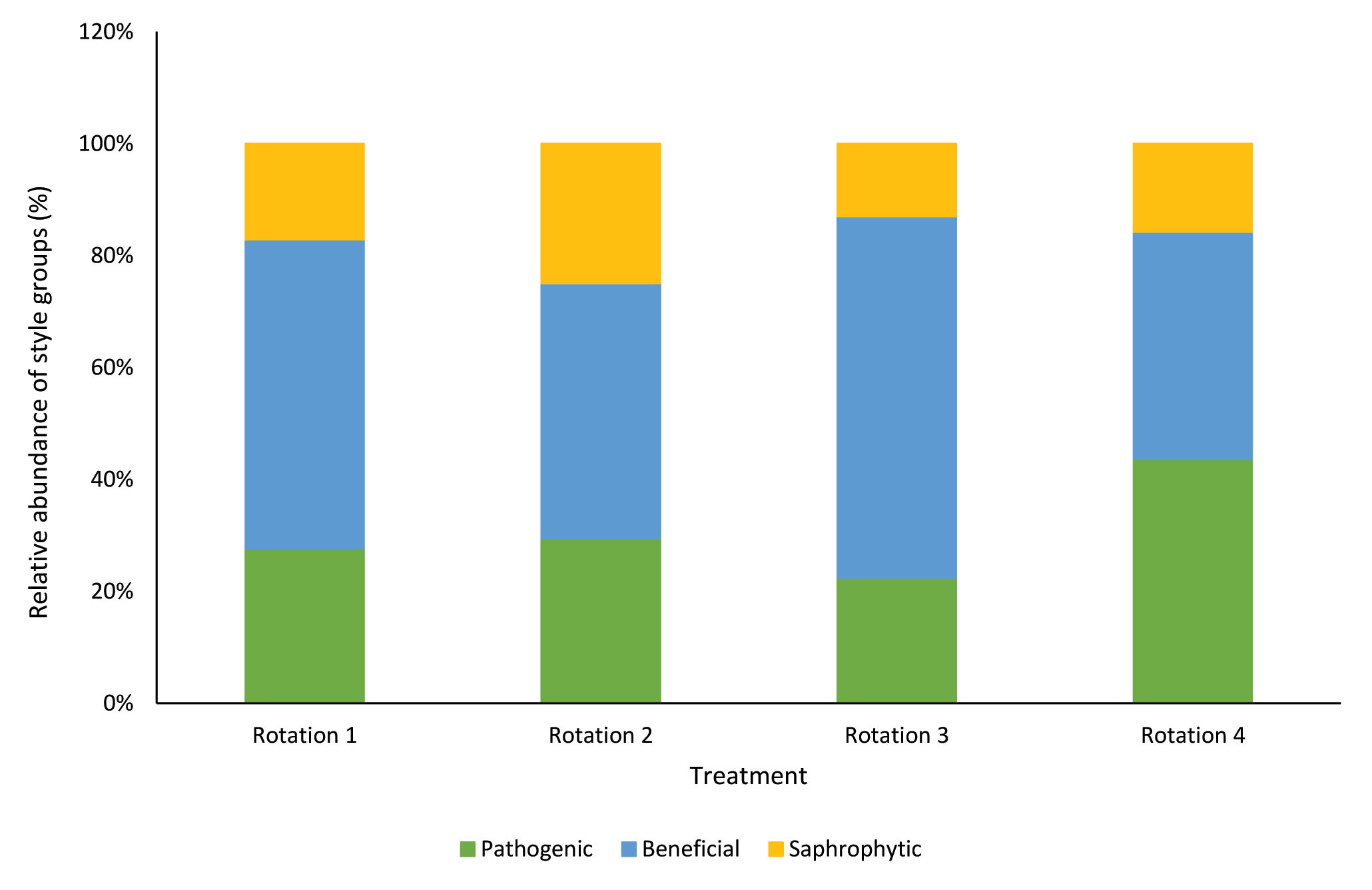
Prof Martin Steyn, professor in Agronomy, Department of Plant and Soil Sciences, University
of Pretoria

Prof Jacquie van der Waals, programme manager: Preharvest Disease Research at
Citrus Research Interna-tional and extraordinary professor: Department of Plant and Soil Sciences, University of Pretoria

Mandla Sibiya,
PhD student, Department of Plant and Soil Sciences, University of Pretoria

Knowledge Mushonga, PhD student, Department of Plant and Soil Sciences, University of Pretoria

Angelique de Wet,
MSc student, Department of Plant and Soil Sciences, University of Pretoria
Part 2
A long-term crop rotation trial with maize and potatoes in rotation with other crops was established in the Petrus Steyn district of the Eastern Free State five years ago. The aim of the study was to assess how different cropping sequences will affect soil chemical, physical and microbial properties over time in order to find the most optimal crop combinations that will ensure long-term ecological and financial sustainability of production in the Eastern Free State.
Part 1 of this series covered the background and methodology followed in the execution of the trial. Part 2 looks at the most important findings of the study to date. Potatoes was the final crop grown on all plots at the end of the first five-year cycle of the study (Figure 1). Changes in soil health indicators over time were assessed for each of the crop rotation treatments. These indicators included the physical, chemical and biological properties of the soil.
Comparisons of changes across seasons were done for consecutive seasons and also between year 1 (2016/2017) and year 5 (2020/2021). Only the most notable changes are highlighted in this article.
Soil chemical properties
The legacy effects of different crop rotation treatments resulted in a significant (p<0,05) decrease in average soil pH (H2O) between the 2016/2017 and 2020/2021 seasons (Graph 1). This reduction can likely be attributed to the use of ammonium-based fertiliser that was applied seasonally and which is known to have an acidifying effect on soils.
Soil potassium (K) levels (mg/kg) significantly increased (p<0,05) from 2016/2017 to the end of the five-year cycle (2020/2021) for all rotation treatments (Graph 2). The increase in K content over seasons can mainly be attributed to soil mineralisation and excess nutrition applied but not taken up by the crops. This can be explained by the poor growth and lower than expected maize yields (±2,2 t/ha) recorded in 2018/2019 due to a dry season. Furthermore, high amounts of K fertiliser were applied to potato crops in 2020/2021, while only moderate potato yields (±28 t/ha) were achieved in 2020/2021, explaining lower K extraction and high K levels remaining in the soil.
Physical properties
Soil physical properties such as bulk density and penetrometer resistance were not different between rotations at the end of the five-year rotation cycle. All rotation treatments showed small but significant relative improvements in soil organic matter (SOM) content over the trial period, except for R1 which showed a decline between the final two seasons (Graph 3). The most productive agricultural soils have between 3% to 6% of SOM content. SOM content for all rotations was, however, still very low (<1%), showing that crop rotation treatments are yet to make a significant impact on SOM and soil health.




Microbial properties
The Solvita CO2-Burst (SCB) test is a valuable tool to quantify CO2 respiration by the living microbial life in soils. SCB analysis has shown positive correlation with various ecosystem services such as SOM content, soil nitrogen (N) and phosphorus (P) mineralisation, plant performance and plant species diversity. It is generally thought that soils with a robust population of microbes are productive and biologically active. Results recorded in the 2016/2017 and 2020/2021 seasons showed that there was a general improvement in soil respiration from the start of the trial to season 5 (Graph 4). Just like SOM improvement, the SCB levels were not significantly different between rotation treatments.

At the end of the potato season (2020/2021) in vitro isolation of soil-borne fungal organisms in the different crop rotation treatments was done. Soil samples taken from each rotation were assessed for the fungal organisms that were present, whereafter the pure cultures were identified and grouped according to morphological characteristics. Each group was then identified by polymerase chain reaction (PCR) and sequencing. When grouped according to their relationship to potatoes, Cladorrhinum spp., Clonostachys spp. and Trichoderma spp. are beneficial, while pathogenic fungal genera included Curvularia spp., Fusarium spp. and Rhizoctonia spp. The remaining organisms were saprophytic genera.
From the isolated fungal genera, R3 (maize-soybean-maize-fallow-potatoes) had the highest average beneficial fungal species (64,6%), whilst the lowest was recorded for the R4 (maize-sunflower-maize-fallow-potatoes) treatment (40,5%) (Graph 5). The latter treatment also had the highest mean pathogenic fungal species (43,7%).

Summary and conclusions
At the end of the first five-year cycle of this crop rotation study, the in vitro studies showed that the legacy effects of rotations that included a legume (R3: maize-soybeans-maize-fallow-potatoes; R2: maize-sugar beans-maize-fallow-potatoes) and teff (R1: maize-maize-teff-fallow-potatoes) better managed soil-borne pathogens. R4 (maize-sunflower-maize-fallow-potatoes) on the other hand, was least effective at controlling soil-borne pathogens, especially Rhizoctonia spp. There were no significant differences in particular indicators between rotation treatments. SOM content, Solvita CO2-Burst and the N mineralisation potential of all treatments have increased gradually over seasons. Unfortunately, all these soil health indicators were still at quite low levels after five seasons.
It is proposed that five years may have been too short a period to observe major improvements in soil health. Significant soil health changes through the build-up of SOM content have usually only been observed after 10 to 15 years of repeated practices. Annual tillage of the soil also homogenised the topsoil and promoted the breakdown of organic material, resulting in the non-significant differences observed between treatments. Furthermore, it is proposed that future inclusion of different tillage practices, such as conservation agriculture, may contribute to the development of more pronounced soil health differences between crop rotation treatments.
Acknowledgements: Funding by Potatoes South Africa, the Department of Science and Innovation (DSI), the Technology Innovation Agency (TIA) and the Maize Trust.



























